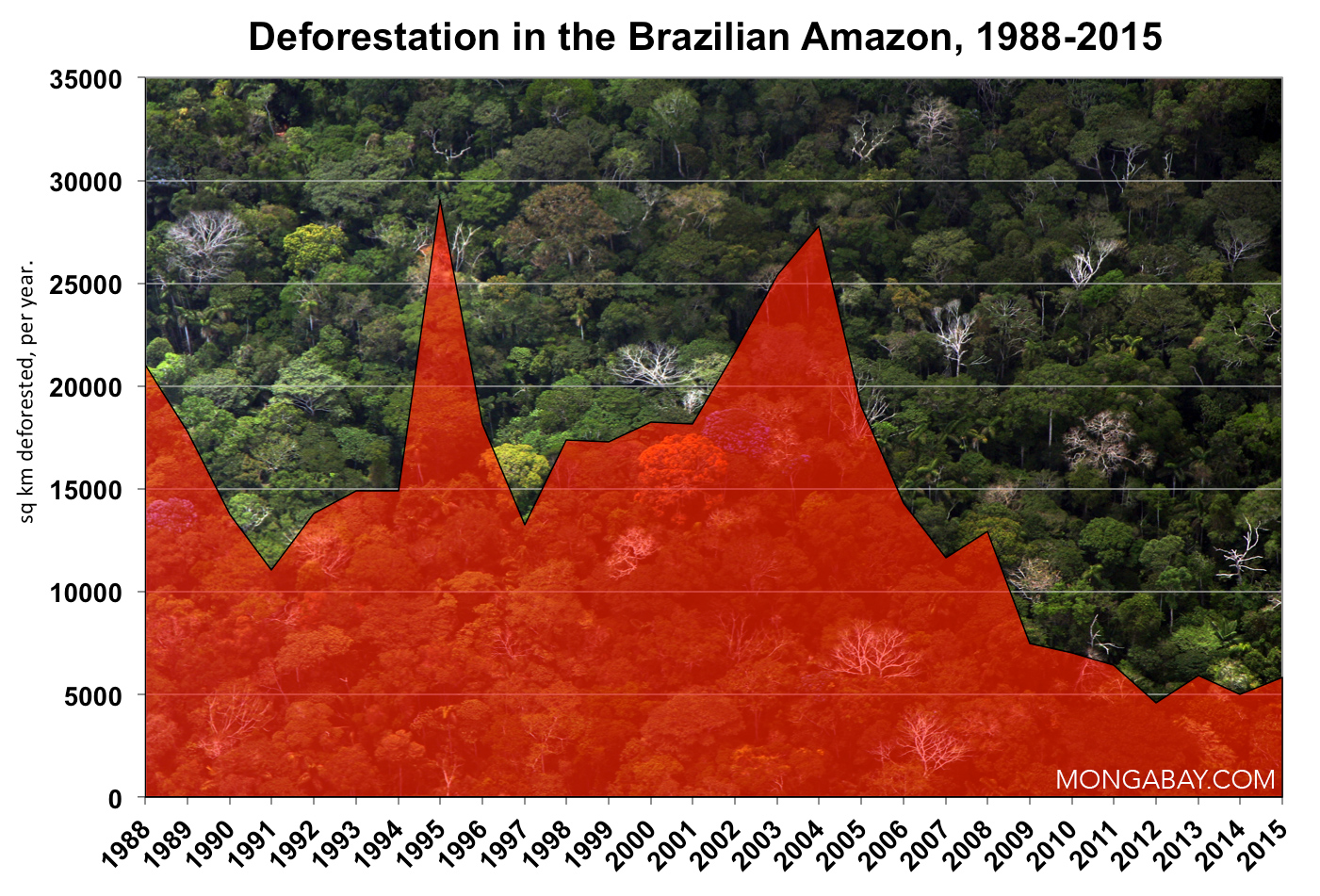- Newly released data suggest that rainforest destruction in the Brazilian Amazon has reached the highest level since 2009.
- In the past week, Brazil’s National Space Research Institute (INPE) and Imazon, a Brazilian NGO, have independently released data from their near-real-time deforestation monitoring programs.
- The revelations raise concern that Brazil’s historic progress in reducing deforestation in the Amazon rainforest may be waning.
Newly released data suggest that rainforest destruction in the Brazilian Amazon has reached the highest level since 2009.
In the past week, Brazil’s National Space Research Institute (INPE) and Imazon, a Brazilian NGO, have independently released data from their near-real-time deforestation monitoring programs. Both show a steep rise in forest clearing relative to this time last year, putting deforestation near decade-level highs.
INPE, which last year stopped reporting deforestation on a monthly basis, released numbers for April through July 2016 showing that its alert system detected 2,953 square kilometers of clearing in the Amazon rainforest. That represents a 25 percent increase over the year earlier period. For the twelve months ending July 31, the area amounted to 5,971 square kilometers — the highest 12-month total dating back to March 2009.


Though Imazon uses its own deforestation detection algorithm, its data shows a similar trend, with forest loss rising to a seven-year high.
Both INPE and Imazon show particularly pronounced deforestation in June 2016: 1,431 square kilometers and 972 square kilometers respectively. Imazon’s system also revealed a big increase in forest degradation, which often precedes outright deforestation.
However the data is still preliminary. INPE and Imazon publish more accurate data based on higher resolution satellite imagery toward the end of the year.

Nonetheless there has a strong correlation between the short-term “alert” data and actual forest loss over the past decade, suggesting that the recent trend is likely to be confirmed when the high resolution assessment is released.
The revelations raise concern that Brazil’s historic progress in reducing deforestation in the Amazon rainforest may be waning. That wouldn’t come as a surprise given recent developments in the country: forest clearing in Brazil often increases in dry years and when the national currency is weak, making agricultural exports more profitable. Additionally some environmentalists have voiced concerns about recent political developments, including the revision of the country’s forest code and a push by Congress to further relax forest protections.
Brazil accounts for nearly two-thirds of the Amazon rainforest, the planet’s biggest tropical forest.

[print-me target=”.entryheader, .mogbullets, article”]







